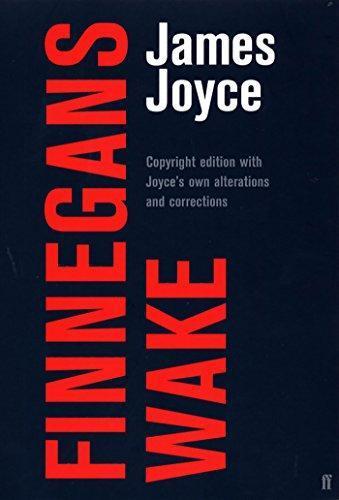628, pagine
lingua English
Pubblicato il 22 Febbraio 2002

628, pagine
lingua English
Pubblicato il 22 Febbraio 2002
Finnegans Wake is a novel by Irish writer James Joyce. It is well known for its experimental style and reputation as one of the most difficult works of fiction in the Western canon. It has been called "a work of fiction which combines a body of fables ... with the work of analysis and deconstruction". Written in Paris over a period of seventeen years and published in 1939, Finnegans Wake was Joyce's final work. The entire book is written in a largely idiosyncratic language, which blends standard English words with neologistic portmanteau words, Irish mannerisms and puns in multiple languages to unique effect. Many critics believe the technique was Joyce's attempt to recreate the experience of sleep and dreams, reproducing the way concepts, people and places become amalgamated in dreaming. It is an attempt by Joyce to combine many of his aesthetic ideas, with references to other works and outside …
Finnegans Wake is a novel by Irish writer James Joyce. It is well known for its experimental style and reputation as one of the most difficult works of fiction in the Western canon. It has been called "a work of fiction which combines a body of fables ... with the work of analysis and deconstruction". Written in Paris over a period of seventeen years and published in 1939, Finnegans Wake was Joyce's final work. The entire book is written in a largely idiosyncratic language, which blends standard English words with neologistic portmanteau words, Irish mannerisms and puns in multiple languages to unique effect. Many critics believe the technique was Joyce's attempt to recreate the experience of sleep and dreams, reproducing the way concepts, people and places become amalgamated in dreaming. It is an attempt by Joyce to combine many of his aesthetic ideas, with references to other works and outside ideas woven into the text; Joyce declared that "Every syllable can be justified". Due to its linguistic experiments, stream of consciousness writing style, literary allusions, free dream associations, and abandonment of narrative conventions, Finnegans Wake remains largely unread by the general public.Despite the obstacles, readers and commentators have reached a broad consensus about the book's central cast of characters and, to a lesser degree, its plot, but key details remain elusive. The book discusses, in an unorthodox fashion, the Earwicker family, comprising the father HCE, the mother ALP, and their three children Shem the Penman, Shaun the Postman, and Issy. Following an unspecified rumour about HCE, the book, in a nonlinear dream narrative, follows his wife's attempts to exonerate him with a letter, his sons' struggle to replace him, Shaun's rise to prominence, and a final monologue by ALP at the break of dawn. The opening line of the book is a sentence fragment which continues from the book's unfinished closing line, making the work a never-ending cycle. Many noted Joycean scholars such as Samuel Beckett and Donald Phillip Verene link this cyclical structure to Giambattista Vico's seminal text La Scienza Nuova (The New Science), upon which they argue Finnegans Wake is structured. Joyce began working on Finnegans Wake shortly after the 1922 publication of Ulysses. By 1928 installments of Joyce's new avant-garde work began to appear, in serialized form, in Parisian literary journals The Transatlantic Review and transition (sic), under the title "fragments from Work in Progress". The actual title of the work remained a secret until the book was published in its entirety, on 4 May 1939. Initial reaction to Finnegans Wake, both in its serialized and final published form, was largely negative, ranging from bafflement at its radical reworking of the English language to open hostility towards its lack of respect for the conventions of the genre.The work has since come to assume a preeminent place in English literature. Anthony Burgess has lauded Finnegans Wake as "a great comic vision, one of the few books of the world that can make us laugh aloud on nearly every page". The prominent literary academic Harold Bloom called it Joyce's masterpiece, and, in The Western Canon (1994), wrote that "if aesthetic merit were ever again to center the canon, [Finnegans Wake] would be as close as our chaos could come to the heights of Shakespeare and Dante".